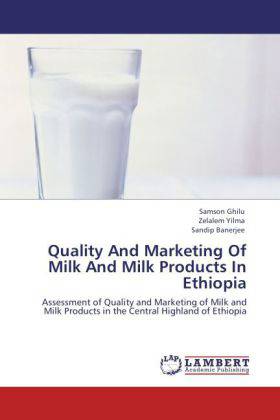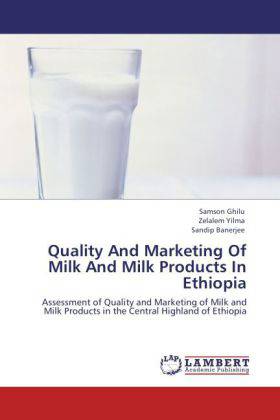
- Afhalen na 1 uur in een winkel met voorraad
- Gratis thuislevering in België vanaf € 30
- Ruim aanbod met 7 miljoen producten
- Afhalen na 1 uur in een winkel met voorraad
- Gratis thuislevering in België vanaf € 30
- Ruim aanbod met 7 miljoen producten
Zoeken
Quality And Marketing Of Milk And Milk Products In Ethiopia
Assessment of Quality and Marketing of Milk and Milk Products in the Central Highland of Ethiopia
Samson Ghilu, Zelalem Yilma, Sandip Banerjee
Paperback | Engels
€ 48,45
+ 96 punten
Omschrijving
The presented study was conducted in selected areas of central highlands of Ethiopia to evaluate the hygienic practices being carried out by the small holder dairy farmers of various dairy products including raw milk. The aim of the study was to determine the microbial and chemical properties of milk and asses the marketing situation of milk and milk products. The study was carried out with 173 smallholder dairy farmers, 74, 50 and 49 respondents each from Holetta, Selale and Debre Brhan respectively. The average of total solids, total proteins, fat, carbohydrate and ash percentages of milk were 12.97, 3.52, 4.53, 4.36 and 0.64 respectively. The average total bacteria, coliform and entrobacteria counts of milk samples were 7.6, 3.6 and 3.2 Log CFU/ml respectively; there was no significant difference between the areas. The level of contamination of milk was high and about 88.8% of the pathogens were entrobacteria.The price of whole milk was almost similar in all study areas whereas higher price was observed for butter in Debre Brhan and Ayib in Holetta. Incidence of microbial contamination of milk is a challenge for quality milk production and consumption in the area
Specificaties
Betrokkenen
- Auteur(s):
- Uitgeverij:
Inhoud
- Aantal bladzijden:
- 76
- Taal:
- Engels
Eigenschappen
- Productcode (EAN):
- 9783848443611
- Verschijningsdatum:
- 12/04/2012
- Uitvoering:
- Paperback
- Formaat:
- Trade paperback (VS)
- Afmetingen:
- 152 mm x 229 mm
- Gewicht:
- 122 g

Alleen bij Standaard Boekhandel
+ 96 punten op je klantenkaart van Standaard Boekhandel
Beoordelingen
We publiceren alleen reviews die voldoen aan de voorwaarden voor reviews. Bekijk onze voorwaarden voor reviews.











